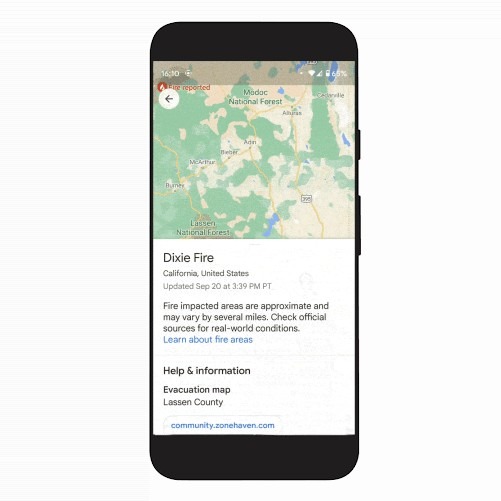Google Reveals New Maps Features
Google has announced that it's using its AI technology and mapping information to help people worldwide access helpful and reliable data to enable progress towards global goals like fighting climate change. Google shared new Maps features intended to help communities be safer and more sustainable while making them discoverable. One of the changes to Google Maps is the addition of a wildfire layer.
Last year, Maps added a wildfire boundary map utilizing satellite data to let users better understand the size and location of a wildfire. Google has built on that feature by integrating all of its wildfire information and offering it globally on the new layer on Maps. Users were able to get current details on multiple fires at the same time utilizing the wildfire layer.

Google says the data is intended to allow users to make quick and informed decisions in an emergency. Users can tap the fire on the map to see all available resources from local governments, including emergency websites, phone numbers, and evacuation details. When the data is available, tapping the fire will also provide details on containment, how many acres have burned, and when the information was reported.
The wildfires layer is rolling out globally this week on Android and will come to iOS and desktop users in October. Another update is the expansion of Tree Canopy Insights to 100 additional cities. In addition, Google says this year it will expand the Environmental Insights Explore Tree Canopy tools from its current coverage of 15 cities to over 100 cities globally, including Guadalajara, London, Sydney, and Toronto.
Initially, Tree Canopy Insights was only available for 15 cities in the US. Google says the feature was first piloted in LA and has become a crucial piece of the city's long-term goal to increase tree shade by at least 50 percent by 2028. Google is also offered new features to make it easy for governments and NGOs to create unique and functional addresses from within the Android app. Google says creating addresses could take years previously, but its new feature shortens that process to weeks.
